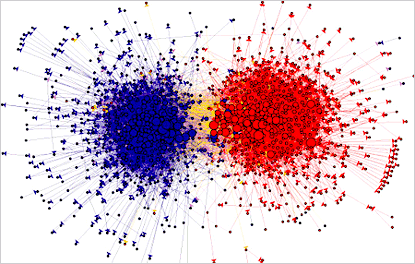aSUNDAY, 6 FEBRUARY 2011
 Election season is taking UP by storm. Hundreds of students package themselves in the best way possible and campaign from rooms to rooms, buildings to buildings. And I, as a part of the most exciting play annually staged in UP, feel the great divide among the three folds of the political spectrum-ALYANSA, STAND UP and KAISA. These political parties/social formations brand their leadership with strong and solid colors. ALYANSA banners a decent and passionate blue, and STAND UP chooses to be with the aggressive and color red. KAISA packages itself with a happy and burning yellow.
Election season is taking UP by storm. Hundreds of students package themselves in the best way possible and campaign from rooms to rooms, buildings to buildings. And I, as a part of the most exciting play annually staged in UP, feel the great divide among the three folds of the political spectrum-ALYANSA, STAND UP and KAISA. These political parties/social formations brand their leadership with strong and solid colors. ALYANSA banners a decent and passionate blue, and STAND UP chooses to be with the aggressive and color red. KAISA packages itself with a happy and burning yellow. This blog will focus on the comparison between the colors BLUE and RED (not the political party).
The researchers from Rochester and the University of Munich found out that color red has an effect on intellectual performance and it reveals that color associations are so strong and embedded so deeply that people are predisposed to certain reactions when they see red. Red is associated to red or failing marks in our high school test and research papers.
Elliot and his colleagues didn't use just any color of red. He assessed the colors using guidelines for hue, saturation, and brightness, and purchased a high-quality printer and a spectrophotometer for the research. He was stunned to learn that results from earlier work on color psychology by others didn't control for saturation and brightness.
The experiment banked on the hypothesis that color evokes motivation and has an effect without the subject knowing it. "It leads people to do worse without their knowledge," says Elliot. when it comes to academic achievement. The research shows that in one of the six tests given, for example, people were allowed a choice of questions to answer. Most of the participants decided to answer the easiest question, a classic example of how to avoid failure.
Studies by Andrew J. Elliot also found out that when people see even traces or spots of red red before being tested, they associate the color with mistakes and failures. In turn, they do poorly on the test. Red may be associated with the error marks within our high school test papers.
Another research spearheaded by scientists at the University of British Columbia studied more than 600 people as they performed various tasks, usually on a computer. Sometimes the screen's background color was red, sometimes it was blue.
These are the results of the experiment:
The experiments showed that with the red background, people did as much as 31 percent better at tasks like proofreading or solving anagrams, which require attention to detail. But for creative tasks, like designing a child's toy, a blue background improved performance.
New research shows that the color red makes us more cautious and attentive to details, while blue makes us more creative and receptive to new ideas.
The new research is exciting, but may be hard to apply to real-world decisions, says Nancy Stone at Missouri University of Science and Technology. For example, she says, it's not clear whether you should paint a library red or blue.
A blue environment might attract more people, she says, but a red one might help them focus.
In a nutshell, blue and red are strong colors. Advertisers and marketing practioners use blue and red to package their products. It gives an appeal to the human motivations and emotions. And as for this campaign season, the battle of blue and red continues. And as part of the blue team, I hope it’s true that blue attract more peopleJ.
University of Rochester (2007, March 1). Research On The Color Red Shows Definite Impact On Achievement. ScienceDaily




No comments:
Post a Comment